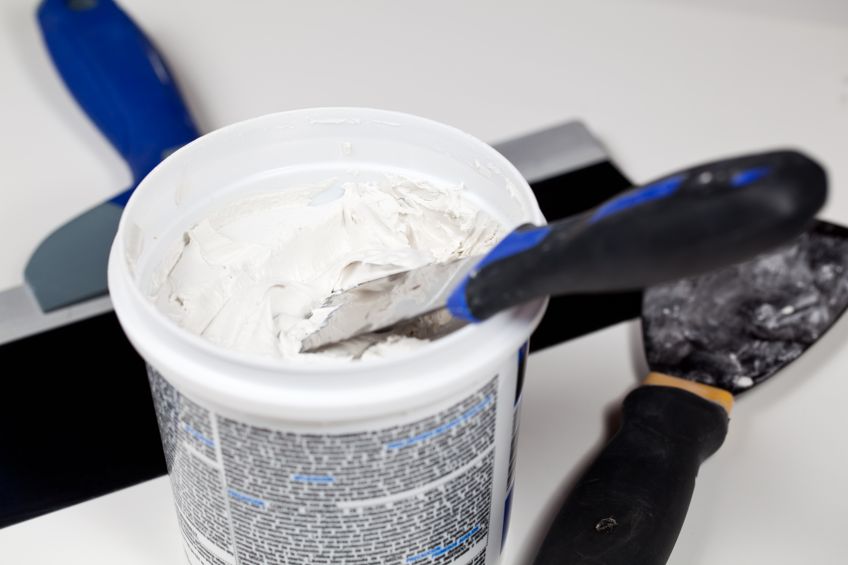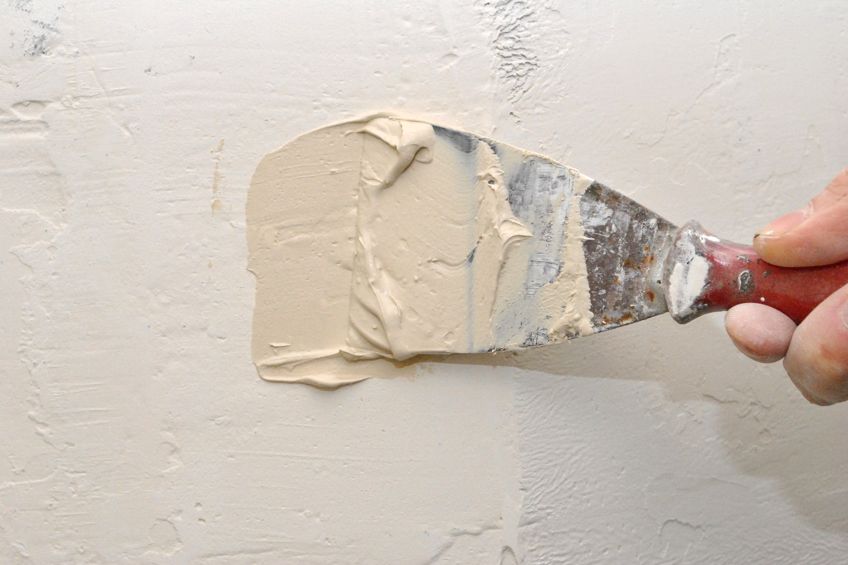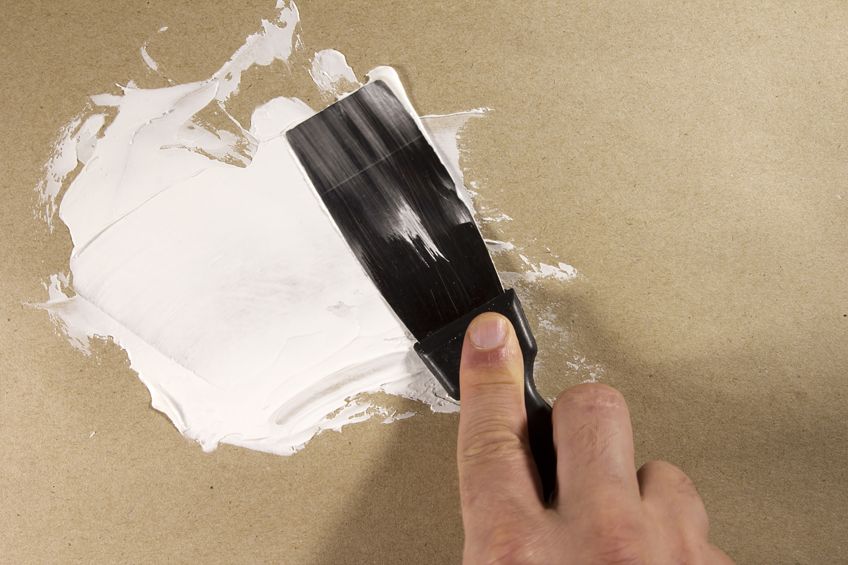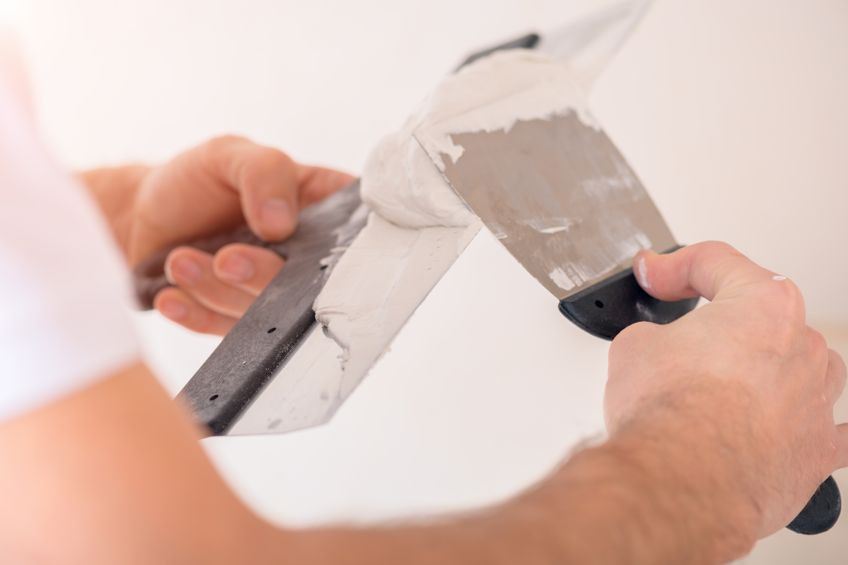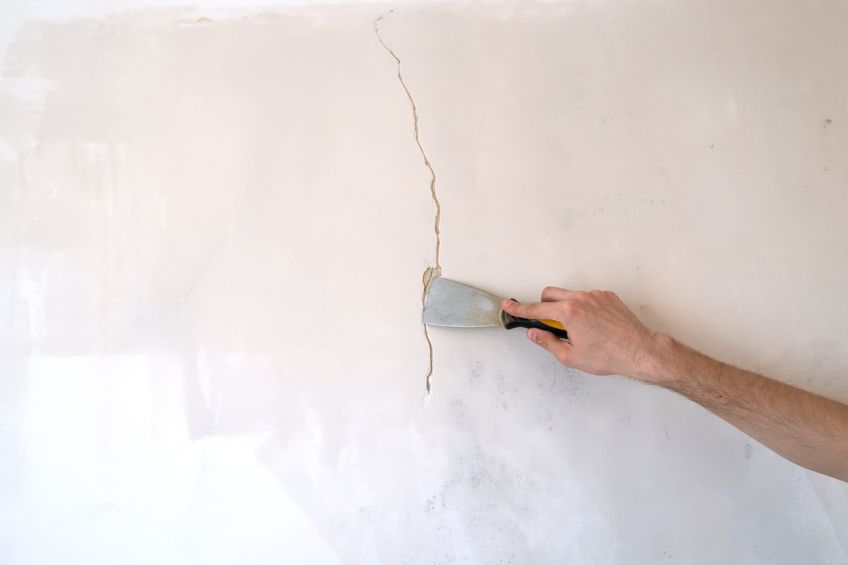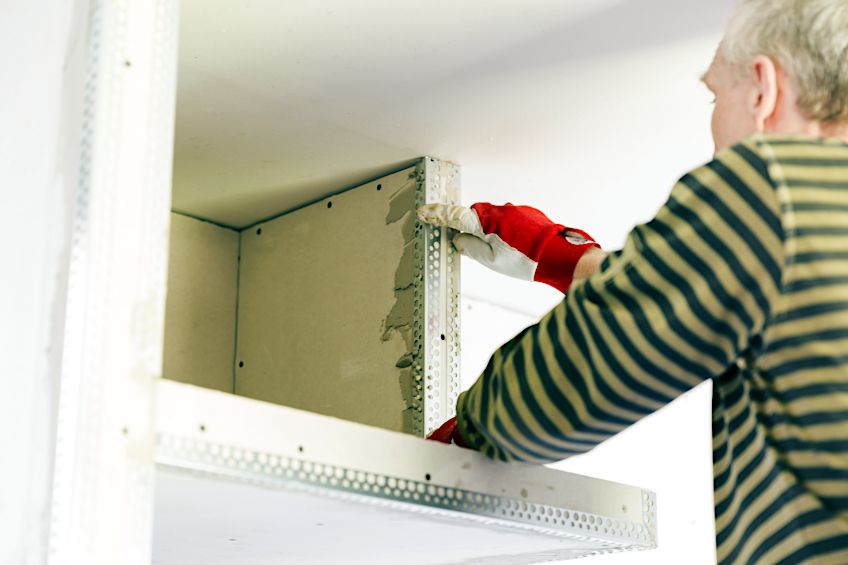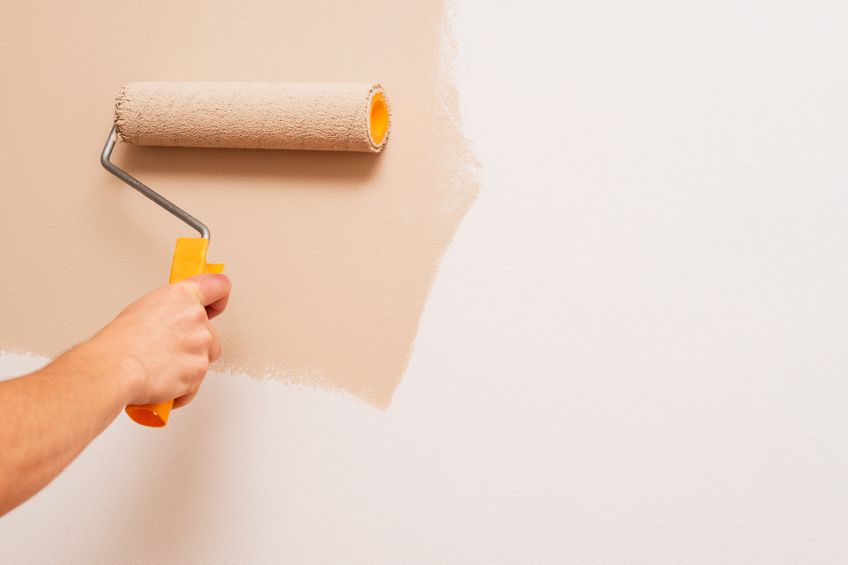How Long Does Spackle Take to Dry? – Complete Guide
This post may contain affiliate links. We may earn a small commission from purchases made through them, at no additional cost to you. You help to support resin-expert.com
It doesn’t matter what type of crafting you do; at some point, you’re going to encounter a workpiece or material that has been damaged or seen better days. In some instances, workpieces can be so badly damaged that you have no choice but to start over from scratch, but if you’re lucky the surface can be repaired, and you’ll be able to carry on with your project. One of the best ways to repair indents, gauges, and scratches on the surface of a workpiece is to use spackle. Spackle is known by many names all over the world, namely wood filler, drywall filler, or joint compound. This being said, how long does spackle take to dry? Let’s have at this and a few other frequently asked questions about spackle.
What Is Spackle?
Before we get into how long spackle takes to dry, it would be helpful to understand exactly what spackle is. Conventional spackle, the most commonly used variation of the product, is a paste-like substance consisting of gypsum and other additives. Once applied to a surface, the paste will eventually harden, filling recesses and/or coating the surface in question. Different brands of spackle contain different additives, but generally speaking, most types of spackle consist of hydrated calcium and gypsum plaster used in the creation of drywall. There are also various adhesives added to spackle to ensure that it adheres to surfaces well and/or does not deteriorate when used to fill a recess or void.
How Long Does Spackle Take to Dry?
How long does spackle take to dry? This is a good question considering that spackle is one of the most commonly used products in the preparation phase of various crafting disciplines. Knowing how long spackle takes to dry allows you to schedule your finishing phase and determine the overall time frame of the exercise. Not all spackle types and brands have the same drying time though.
There are various types of spackles for different applications, like ones that can be used on wood, plastic, drywall, and other materials that may have deteriorated over time.
There is even a type of spackle designed for use on cars, known commonly as “body filler”. Keep in mind that spackle should be used for small repairs only, as it is in no way a substitute for primary load-bearing materials such as metal, wood, resins, or plastics. If there are large recesses that need to be filled which play a crucial part in the operation or structural integrity of the workpiece, we recommend getting the affected area professionally repaired or replaced.
Factors That Affect the Drying Time of Spackle
Keeping the aforementioned in mind, there are loads of things that need to be taken into account to determine the drying time of spackle. Thankfully, in most cases, the average spackle drying time will be stated on the packaging by the manufacturer. However, there are some factors that should also be noted that can affect its drying time, so we’ve listed a few of them for you below.
Type of Spackle
The type of spackle being used for your project can affect the overall time it takes to complete it. This being said, it’s a good idea to familiarize yourself with the different types of spackle used to fill different materials and their respective drying times.
In the interest of convenience, we’ve listed some of the most commonly used spackle types, their drying time, and their intended applications.
Standard Spackle
Standard spackle is pretty much the most common spackle product that you would find in your local hardware or home improvement store. This type of spackle is commonly used to patch up and seal drywall surfaces. What is standard spackle made of? Generally, standard spackle is made of some combination of gypsum and additives that can vary depending on the brand and quality of the product.
Standard spackle drying time is in the two-hour region, but this can vary slightly, again based on the brand and quality of the product being used. Generally speaking, though, most manufacturers will advise letting their spackle dry for just over two hours to compensate for differences in ambient temperatures and humidity.
Epoxy Spackle
Before we get into epoxy, we should mention that epoxy isn’t a spackle in the same way that most products marketed as spackle are. Can epoxy be used as spackle? Sure, it’s even objectively better than most standard variations of the product, but epoxy is actually a thermoplastic compound that can be used for a wide variety of applications. Epoxy is waterproof, heat and UV resistant, impact and abrasion resistant, and can last for far longer than standard spackle. It has far greater adhesive strength, can be easier to work with in some applications, and has better shape retention once cured.
However, epoxy takes up to 24 hours to cure and dry before it can be sanded and painted over.
Vinyl Spackle
Vinyl spackle is one of the best spackle types to use for deep recesses that need to be filled. As the name suggests, this type of spackle has vinyl in its composition, which when used to fill a hole creates a stable and long-lasting void filler. This type of spackle is typically applied in layers, waiting for each layer to cure and dry completely before the next is applied.
How long does vinyl spackle take to dry, you ask? Well, it takes a bit longer than standard spackle but way faster than epoxy. Thanks to the elasticity and viscosity of vinyl spackle it only takes around 5 hours to dry completely. As we mentioned previously, additional vinyl spackle can only be added once this time has elapsed. Also, keep in mind that this time can be greater or lesser depending on the amount of vinyl spackle being used.
Acrylic Spackle
If you have a particularly deep recess that needs to be filled and aren’t sure about what type of spackle is best suited for the job, acrylic spackle might be just what you’re looking for. This spackle type is versatile, can be applied in large amounts, and is incredibly stable once it has had a chance to cure and dry completely. How long does it take acrylic spackle to dry, though? Acrylic spackle can take up to five hours to dry but this depends on the temperature and humidity of the immediate environment.
If conditions are ideal acrylic spackle cure and dry completely within two hours, which is pretty impressive considering its ease of use and durability.
Fast-Drying Spackle
If you’re not dealing with a gaping hole that needs to be filled immediately, but rather a few bumps and small scratches on your drywall surface then you might want to give the fast-drying (or “quick-drying”) spackle a try. This type of spackle is easy to use and has been designed with quick and effective repairs in mind.
How long does this spackle type take to dry, though? Well, as the name suggests it dries pretty quickly, only taking around half an hour to dry completely. This spackle is sold in the form of a powder, which when mixed with water forms a paste that can be used to fill in little cracks and dents in drywall surfaces.
Size of the Repair Being Undertaken
This might seem straightforward, but it’s actually an easy factor to dismiss when you’re working with spackle. The more spackle being used, especially when you’re using it to fill a recess, the longer the spackle will take to dry. Why does this happen? Well, the concentration of spackle in one area makes the compound denser, minimizing atmospheric exposure and concentrating moisture in one spot.
A fairly crude example of how this works is to compare how long paint takes to dry once it has been applied to a wall, compared to how long a can of paint would take to dry if you simply opened it and left it there.
Only the top layer of paint is exposed to the atmosphere and therefore only the top layer will “dry”. The inverse is true as well. If a spackle is applied and spread out over the surface of a workpiece, it will dry noticeably quicker. This is because the concentration of the spackle in one given spot is very little, meaning that the atmospheric exposure will allow it to dry more quickly. Again, this parallels the drying rules for paint very closely.
Ambient Temperature
Just as much as the intended drying time of a spackle product matters so does the environment in which it’s applied. Spackle tends to dry faster when exposed to a certain temperature range, this being at 50 degrees Fahrenheit (or 10 degrees Celsius). Temperatures significantly higher or lower than this can cause the spackle o to fail to dry entirely.
Just like paint, spackle will take longer to dry if the environment has a high degree of humidity. Humidity causes spackle to dry noticeably slower, so if you have a dehumidifier and you’re applying spackle indoors you could make use of it to speed up the drying process. Alternatively, you could simply increase the airflow in your immediate environment to achieve the same result.
How to Make Spackle Dry Faster
Wondering how to make spackle dry faster? The best way to go about this is to ensure that the immediate environment is conducive to the drying process. This means ensuring that the temperature in your workspace needs is kept within the tolerances of the spackle and that you keep humidity to a minimum once the spackle has been applied.
As we mentioned previously, this means making use of constant airflow in your workspace to ensure that there is adequate ventilation, and/or using a dehumidifier to ensure that any excessive humidity is dissipated. You can also make use of heaters and or air conditioners, as long as they don’t face the spackle directly.
This all might seem a bit excessive, but we assure you it works. While spackle is uncured it is very susceptible to the immediate environment. Small changes in light, the size of the space, temperature, and humidity can affect the dry time of the spackle easily. This being said, Spackle should be applied indoors so environmental control is more manageable.
Now that you know what spackle is, what affects its drying time, the different types of spackle out there, what it’s used for, and how to make it dry faster, it’s time for you to get out there and put your new-found knowledge to the test. Remember to always ensure that your spackle is applied indoors and that the environment is conducive to the drying process.
Frequently Asked Questions
How Long Should Spackle Dry Before Painting?
How long should spackle dry before painting? Different types of spackle have different drying times. However, the manufacturer should state the estimated drying time of their product on the packaging. Most spackle products besides epoxy take up to five hours to dry completely, depending on the ambient temperature and humidity.
Does Spackle Dry Hard?
Does spackle dry hard once cured? Yes. Most spackle products are a one-part solution that is sold in the form of a paint. Once used to coat a surface or fill a voice the paste will harden into a resin or chalk-like substance, which is solid and relatively hard.
How Long Should Spackle Dry Before Sanding?
How long should spackle dry before sanding? Spackle should always be allowed to dry completely before sanding can begin. Most spackle products besides epoxy take around five hours to dry completely depending on the temperature and humidity of the workspace. However, you should always allow the spackle to dry for the manufacturer’s recommended time period.
Is Applying Spackle Easy?
Is applying spackle easy? Yes! Standard spackle is exceedingly easy to use. All you need to do is apply it either directly to the intended surface or use a putty knife. Once the spackle has been applied, use a putty knife to smear it across the surface or use it to fill a void, then allow it to dry for the manufacturer’s recommended time period.


